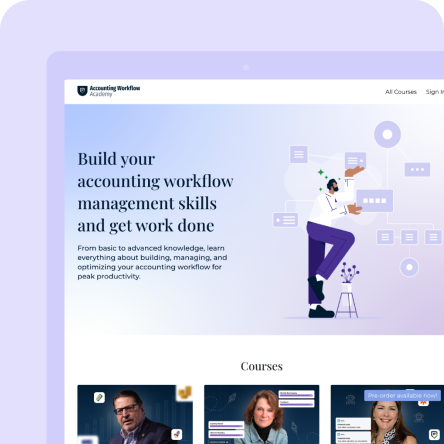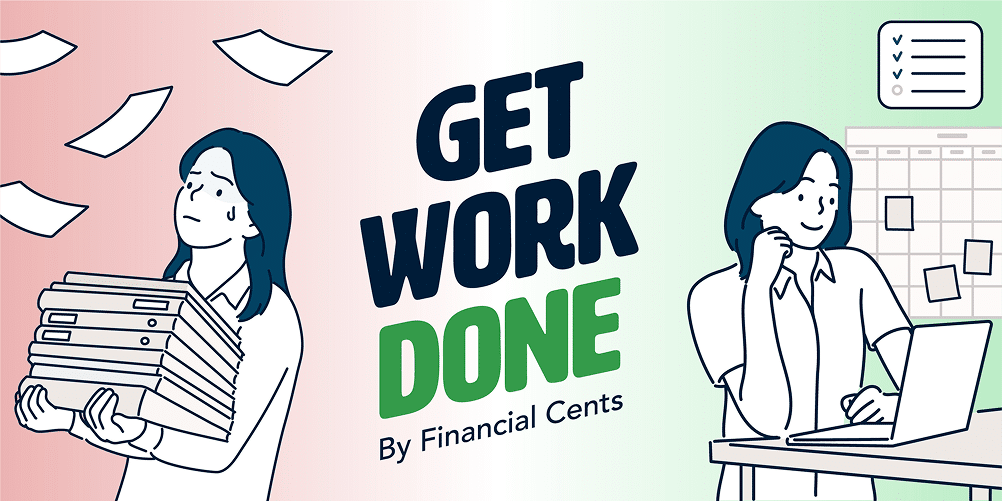S02 E10: How to Develop a Go-to-Market Strategy For Your Accounting Firm
Guest: Michael Haynes

Podcasts » S02 E10: How to Develop a Go-to-Market Strategy For Your Accounting Firm
Accounting Flow is a podcast deep dive into accounting firm workflow & processes. In each episode, we uncover specific processes that firm owners and operators encounter on a daily basis and discuss ways to improve them. Brought to you by Financial Cents and hosted by Roman Villard, CPA, and Shahram Zarshenas.
Struggling to attract new clients and keep your existing ones happy? In today’s competitive marketplace, accounting firms need a strategic marketing plan to stand out. Without a clear direction, it can be difficult to reach your target audience and generate leads.
Join host Roman Villard and Michael Haynes, as they crack the code on building a powerful go-to-market strategy designed specifically for accounting firms. In this episode, you’ll discover:
- The secret to identifying your ideal client and crafting messaging that speaks directly to their needs.
- Cutting-edge marketing channels that are perfect for reaching high-value clients in today’s digital world.
- Actionable steps to create a data-driven marketing plan that gets results (and keeps you on track).
Tune in!
Timestamps
Roman Villard
What’s up, everyone? Welcome to the Accounting Flow Podcast, brought to you by Financial Cents. This podcast is dedicated to diving deep into accounting firm workflows and processes. In each episode, we spend 20 minutes interviewing accounting firm owners, uncovering specific methods, and discussing ways to improve them. Let’s go.
Roman Villard
All right, welcome to another episode of Accounting Flow. Today, we’re talking about go-to-market strategy. Our guest is the prolific Michael Haynes, an SME Business Growth Specialist with Listen, Innovate, and Grow. Welcome.
Michael Haynes
Thanks, Roman. It’s great to be here. Looking forward to this conversation.
Roman Villard
Go-to-market strategy is one of my favorite topics, yet it’s not well-explored in accounting. Can you give us a brief overview of how you work with clients and what types of clients you work with?
Michael Haynes
Sure. I work with small and medium B2B accounting, technology, and law firms. I help them implement a buyer-driven go-to-market strategy to acquire, retain, and grow clients and their firms. It’s essential to have a go-to-market strategy, not just a marketing plan. Marketing and sales are crucial, but a go-to-market strategy is your complete roadmap. It helps identify the right market opportunities, industry sectors, geographic markets, and specific client types. It involves client acquisition, retention, and growth, encompassing all firm parts: marketing, sales, client delivery, learning and development, and solution offerings. It’s your end-to-end roadmap from market identification to client acquisition, retention, and growth.
Roman Villard
Michael, we could do an entire series on this. Twenty-five to thirty minutes isn’t enough to cover everything. Let’s dive into an example of a five-person or ten-person firm looking to grow and scale, coming from an accounting background but not proficient in sales and marketing. Where should the firm owner start to think about an accurate go-to-market movement?
Michael Haynes
Getting started begins with listening and gaining an in-depth understanding. Start with your current client base. For B2B accounting firms, understanding the organization of the company is crucial. For example, one of my clients is a 12-person accounting firm in Sydney, selling to FinTech companies. We need to understand the decision-makers within the firm, their priorities, and how they make decisions about accounting and advisory services. This understanding sets the foundation for your roadmap. Talk to your clients, decision-makers, and influencers about their priorities and challenges. Understand where they go for advice, insights, and recommendations. This core understanding at the client level is a great starting point.
Roman Villard
So, does that typically demonstrate itself internally as developing a customer archetype and profile, then weaving that profile into an accurate go-to-market motion?
Michael Haynes
Absolutely. By talking to your clients and prospects, you gain a profile of the types of organizations you’ll be dealing with, understanding their decision-makers, objectives, challenges, and where they go for advice, insights, and recommendations. This profile sets the stage for your roadmap.
Roman Villard
There’s a book from the 1980s called Selling Strategies. It discusses different buyers in any buying process. In your acronym “AIR” (Advice, Insights, Recommendations), who influences the buying decision? Often, one decision-maker signs the contract, but many stakeholders influence it. How do you discover those core motivators?
Michael Haynes
Typically, we set up interview discussions with decision-makers and ask them to bring in others involved in the decision-making process. We also ask who else they go to for advice, insights, and recommendations. Understanding these trusted sources is key because buyers seek clarity and confidence from trusted advice.
Roman Villard
After establishing a buyer profile and gathering information, are we mapping out a buyer or client journey? How does a firm owner take this one step further?
Michael Haynes
After listening, which gives you a core understanding of your target market and buyers, build the three core pillars of your go-to-market strategy: content, events (especially micro-events), and collaborations/partnerships. Buyers seek content for advice, insights, and recommendations. Develop a content strategy (creation and distribution), host micro-events for engagement, and collaborate with trusted sources. These pillars attract and retain clients.
Roman Villard
I love that. For a firm owner with enough business but wanting to refine client acquisition, how do you advise them to focus on the right types of companies?
Michael Haynes
Analyze your current client portfolio to understand your top revenue and profitability generators. Conduct a win-loss analysis and workshops with your team to identify the most profitable clients and those that align with your firm’s growth goals. That helps give you a reason and enables you to zero in on the industry sectors. What are the markets, and what kinds of clients do we want to be going after? Doing that kind of exercise, often done in a workshopping environment based on data and strategic intent, helps get clarity and focus.
Roman Villard
I like that. It’s like a client heat map: identifying your biggest advocates and profitable clients. Most firms’ best clients come from referrals. How do you balance an outbound strategy with activating your existing client referral base?
Michael Haynes
Start with your current client base. Understand their needs and priorities and build strategic account plans to nurture, maintain, and grow these clients. Provide relevant content, micro-events, and collaborations to add value and retain clients. This is also an area that one of my clients in Ohio is having an issue with because his clients are growing. I’m doing client interviews with some of them, and some of them are like, the firm is no longer entirely relevant because we are in phases two and three of our growth, which is not quite as relevant. So I’m working with that firm on how they have. Modify the offering of their active service, as well as content and events, so that they are relevant and able to continue to add value and retain their clients.
Roman Villard
Niching is a hot topic. How deep should firms go in their niche?
Do you recommend that most firms go in that direction?
Michael Haynes
Great question, Roman. Yes, I recommend that professional service firms, including accounting firms, focus on niching. It definitely works and helps. I’ve done it with my consulting business. Niching down allows you to be very specific about knowing your decision-makers, where to find them, and their trusted sources for advice and insights. This helps determine what kind of content you need to create, what events to host, and which partners to collaborate with.
For example, before focusing on B2B, I went broad. Now, I have narrowed it down specifically to podcasts with a solid listening base, trusted by my clients. This specificity helps in identifying the right industry associations, podcasts, events, content, channels, and potential partners for collaborations. It makes your marketing and sales tactics and overall go-to-market strategy much more effective and faster.
People quickly learn who you are and what you stand for. For instance, now people know me as the “accounting tech law guy.” This reputation helps me get opportunities to speak at keynotes, be featured on podcasts, and more. You become the go-to expert in your niche, opening up the right opportunities.
Clients and other ecosystem members recognize what you stand for and who you serve. It’s a win-win for everyone.
Roman Villard
What are the risks of not niching and staying broad?
Michael Haynes
The risk is losing relevance. As clients grow and need specific expertise, a broad approach won’t provide the depth of knowledge they require. You may become irrelevant, unable to serve your clients effectively as they progress.
I’ve seen a client in the Northeastern United States who started very broad, bringing in many clients initially. However, as their firm looked to build and grow, their clients’ needs and priorities changed. Without a specific focus, the firm lacked the expertise clients sought as they grew. Clients began needing specialized knowledge in areas like technology, operating systems, and industry-specific knowledge. Without niching down and becoming experts in specific areas, the firm became irrelevant and unable to serve their clients’ evolving needs. This broad approach eventually backfired, as the firm’s clients became more targeted and required specific expertise that the firm couldn’t provide.
Roman Villard
Exactly. It’s an inhibitor of scalability. Let’s move to quick questions. Where should a new firm owner start if they don’t have existing customers?
Michael Haynes
The first place to look at is the relevant industry and professional associations for their target industries. Go onto both websites; there is a repository with industry reports, newsletters, and webinars. There might even be some events where you can start listening at that industry market level, and you’ll gain some excellent insights around the industries to markets to clients and even the buyer. So, industry professional association websites for the first protocol.
Roman Villard
What’s the best content medium for a small accounting firm?
Michael Haynes
Well, email, social media, and leveraging relevant partners, so people in your network who you can get to share that content on their email and social media start from there.
Roman Villard
As we’ve exited the pandemic and operate remotely, how important is geographical focus for firm growth?
Michael Haynes
As long as you understand the industry dynamics and the markets you serve, you can work globally. I’m based in Sydney, Australia; my core markets are Australia, Canada, and the US, but I also have clients in Singapore and Dubai. And that’s the virtue of my depth of expertise in small and medium accounting, tech, and law firms. So long as you understand the depth of knowledge in your industry and the dynamic of the geographic markets you serve. In our business, we can work anywhere.
Roman Villard
Awesome. Michael, this has been stimulating. For those wanting to reach out to you, how can they contact you?
Michael Haynes
Connect with me on LinkedIn. I regularly post content there. Visit my website at listeninnovategrow.com for insights and content about building and growing small and medium B2B professional service firms.
Roman Villard
Great. Thank you, Michael, for your insights. I’d recommend anyone contact Michael for go-to-market strategy initiatives. Thanks for coming on today.
Michael Haynes
Thanks, Roman. It was great being here.
Roman Villard
Thank you for listening today. If you enjoyed this podcast, share and write a review to help other firm owners find our podcast and gain insights into growing their firms. Stay tuned.




